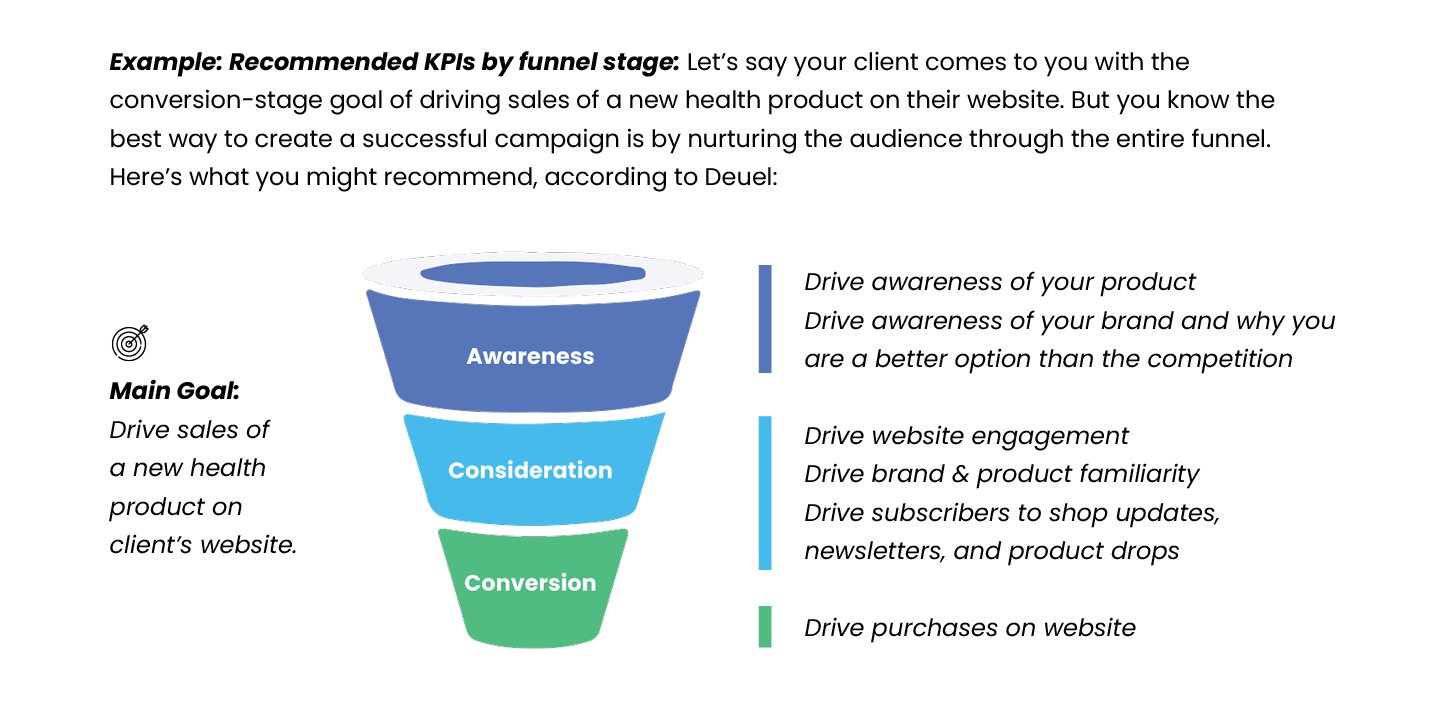3 Top Questions Answered About Digital Marketing Funnel Stages
Align advertising KPIs to funnel stages and create trust with clients and audiences.
Planning campaigns using the full funnel is important for all marketers. It helps us align our goals, tactics, and creative efforts, nurture audiences and work toward fulfilling business goals. But there are some specific considerations for digital advertising professionals who want to strategically plan for every stage of the user journey.
We’ll dive into those considerations in this article. But first, let’s review. In paid advertising, the digital marketing funnel stages are:
Awareness: Introduces the brand, service, or product.
Consideration: Engages and educates the audience, encouraging them to develop feelings and opinions about your brand, product, or service.
Conversion: Asks the audience to take an action, like buying a product, signing up for a newsletter, or registering for a webinar.
“Thinking full funnel ensures that you’re nurturing your audience to create a sustainable outcome for your campaign, client, product, and/or brand,” explains Alexandra Deuel, Marketing Manager at Lumenad. But just because a digital marketer thinks full-funnel doesn’t mean their clients are doing the same.
Are conversion-stage-only campaigns okay?
“Time and time again, I see advertisers make one big mistake when media planning. They invest only in low funnel campaigns. It might be the right strategy in the short run, but choosing the full-funnel approach is key to long-term media planning and scaling a business.”
– Julie Amanda Nyholm Petersen, Head of Social Marketing MediaGroup Worldwide
Often, clients come to agencies looking for conversions without an interest in addressing the rest of the digital marketing funnel stages. But depending on the type of company says Deuel, that approach is likely short-sighted.
Thinking full funnel allows you to achieve more than just that singular goal. While a conversion campaign will help you get there, a holistic approach allows marketers to do so much more with their client's campaigns. Focusing on every stage helps to capture a wider audience, stay top of mind, create trust and familiarity, educate, convince, and then finally convert or hit the final action-oriented goal.
Focusing only on the bottom of the funnel might bring someone to your client’s site after they’ve seen an ad. They might:
Buy a product and never come back.
Sign up for a newsletter, and receive the client’s emails, but never engage further.
“They see your ad, and perhaps there’s some interest,” Deuel explains. “But if they haven’t had the chance to develop any feelings or opinions about your client’s brand, the relationship could fizzle before it gets off the ground.” And there’s one feeling in particular that could keep your audience from moving from prospects to customers: distrust.
How do I leverage all digital marketing funnel stages to create trust?
“Consumers are sold goods they never receive or are lured into financial scams; legitimate advertisers’ accounts or pages are hacked and used to peddle those nonexistent goods or scams; credit card numbers are stolen. But the end result is often the same: Facebook banks ad revenue, while its users get ripped off.”
— Buzzfeed News
In today’s increasingly digital marketplace, consumers are flooded with options for products and services — so much so that it’s often incredibly difficult to tell legitimate advertisements on social media platforms from scams. An article in Time magazine tells the story of consumers who were shown ads on Facebook for sea glass Christmas trees, purchased the items, and was sent dollar store trinkets instead. The images, reports Time, were stolen from the Etsy shop of the artist who made the actual trees, and the ad carried her branding. But the shop owner was unaware her products were being used as part of the scam until she started getting complaints.
Nurturing your client’s audience through all digital marketing funnel stages, from awareness to conversion, provides ample opportunity for consumers to recognize the brand, decide if the brand is on the up and up, make a confident purchase, and become repeat and loyal customers.
How do I convince clients to think full funnel?
Luckily, the marketing funnel is an established model for successful customer journeys. As experts in paid ad strategy, digital marketers need to remind clients that not everyone in their target audience is at the same point of the customer journey and will require different creative, targeting, messaging, and channel strategy to reach them.
Leveraging the full marketing funnel to plan your client’s campaign helps create trust with your audience, solidifies your expertise with your client, and puts your campaign in a position to succeed.

